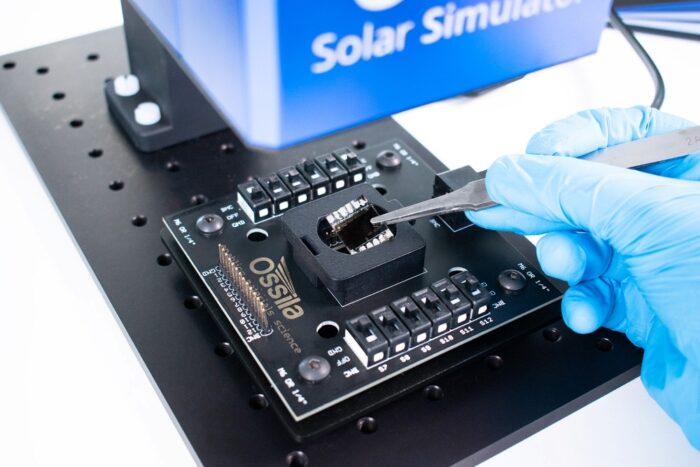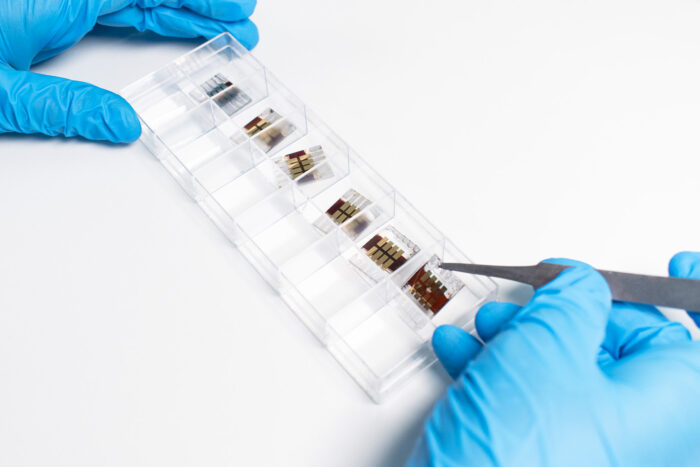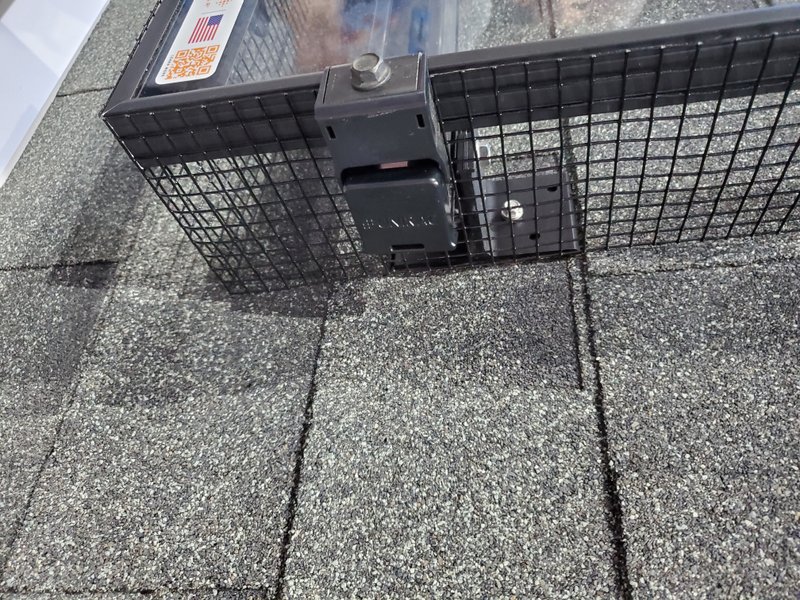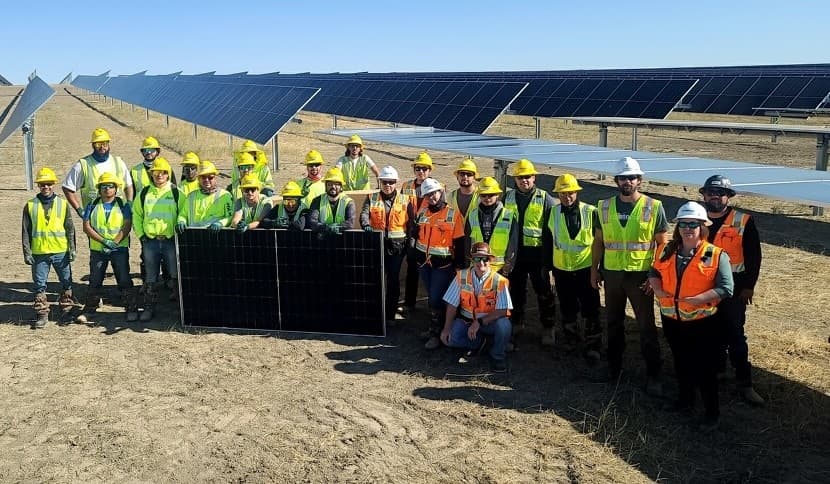Design for durability: How extreme weather shapes solar panel innovation

By Mary O’Kane | Ossila Ltd.
According to the International Energy Agency (IEA), investment in solar is now outpacing all other power generation technologies combined. Yet, the solar power industry is now facing an increasingly powerful opponent: extreme weather.
The Intergovernmental Panel on Climate Change (IPCC) has confirmed that human-driven greenhouse gas emissions have already escalated the frequency and intensity of extreme weather events. Hurricanes, heavy snowfall, hailstorms, and heatwaves are driving innovation in solar panel technology to build systems resilient enough to withstand these conditions while maintaining efficiency and longevity.
Extreme weather impact
Solar panels are engineered to endure a range of environmental conditions, but the increasing severity and frequency of extreme weather events are pushing these limits. While research by the National Renewable Energy Laboratory (NREL) found many cases of extreme weather led to only a 1% energy loss per year, it also demonstrated that in some cases of flooding and high wind, a 60% loss in annual energy production was experienced by individual systems.
The research also highlights that photovoltaic systems experience long-term degradation when exposed to severe weather, such as large hailstorms and high winds. Hailstorms pose a direct threat to the glass protecting solar cells, which can cause cracks that compromise performance. Alongside this, intense heat and UV radiation degrade solar panel materials over time, while heavy snow and ice add excessive weight and obstruct energy production. These impacts not only reduce energy output but also result in costly repairs or replacements, adding financial strain to solar projects.
As new solar technologies enter the commercial market, understanding and mitigating the effects of extreme weather is essential to ensuring their resilience and efficiency.
Testing standards and certifications
The increasing frequency and intensity of extreme weather events have raised concerns about whether current testing standards and certifications for solar panels are sufficient. Studies suggest that existing protocols often fail to fully account for the impacts of such conditions, highlighting the urgent need for more stringent testing measures. In June 2024, kWh Analytics reported that weather-related damages to solar assets have exceeded modeled expectations by 300%.
For example, the IEC 61215 standards for solar panel testing state solar panels must endure 11 impacts from 25-millimeter (1-inch) hail. Yet the Institute for Energy Research reported crippling damage to solar farms in hail-prone regions of the U.S. in both March 2024 and June 2023. Since the installations would have passed the IEC 61215 testing, the Renewable Energy Test Center (RETC) advises that manufacturers adopt enhanced testing protocols to address severe hail damage.
To improve the resilience of solar systems against extreme weather, manufacturers and testing organizations must first identify the damage thresholds for various components. Developing appropriate standards and subsequent testing scenarios would ensure that extreme weather resistance is built into the solar panel design.
Meanwhile, emerging technology, such as larger modules, and thinner cells (with thinner front glass), could further increase system vulnerabilities unless appropriately designed and rigorously tested.
Innovations in solar panel design
New and emerging solar panel technologies are making more effort to address the challenges posed by extreme weather events. These advancements span three key areas, which ensure that solar systems remain reliable and cost-effective, even in the face of unpredictable environmental challenges.
Enhanced materials
Modern solar panels are fabricated with advanced materials engineered to endure the more severe weather conditions:
- Advancements in encapsulation materials, such as multilayer polymers to protect sensitive components from moisture and UV degradation.
- Solar cells are now formulated with high-temperature-resistant materials that sustain efficiency even during prolonged exposure to extreme heat.
- Tempered glass with anti-hail coating provides robust protection against hailstones, preventing cracks and other damage.
- For areas prone to environmental debris, self-cleaning and anti-soiling coating can reduce the accumulation of dirt, ash, and snow. These coatings also lower maintenance costs by keeping the panel surface clear.
Advanced structural designs
Structural innovations are addressing vulnerabilities to wind and snow, making installations more resilient. Stronger mounting systems with reinforced frames and aerodynamic profiles reduce the risk of detachment during hurricanes or high winds. In snow-prone regions, adjustable tilt mechanisms allow panels to alter their angle to shed accumulated snow effectively, preventing excess weight and maintaining energy output during winter months.
Emerging flexible and bendable panels are one solution for regions exposed to strong winds. These designs, often employing thin-film technology, can reduce the likelihood of damage by absorbing stress and bending instead of breaking.

Smarter technology integration
Artificial intelligence and big data are transforming the design and maintenance of solar panel systems, driving significant advancements in durability, adaptability, and efficiency. By leveraging predictive modeling and climate data, manufacturers can anticipate regional environmental challenges and engineer systems tailored to withstand specific conditions. These technologies also optimize maintenance by monitoring wear, forecasting potential issues, and enabling proactive solutions, ensuring the long-term reliability of solar panels even in the harshest environments.
Within installations, modern tracking systems, traditionally used to adjust panel angles for optimal sun exposure, now incorporate intelligent algorithms capable of detecting severe weather. These systems can reposition panels, such as tilting them flat during high winds or more vertical in hailstorms to prevent damage and ensure operational continuity.
Do next-gen solar materials hold up?
The resilience of next-generation solar materials to extreme weather is a critical factor in their adoption and long-term success. Materials like perovskites, quantum dots, and organic polymers are at the forefront of solar innovation, but can they withstand extreme conditions?
Perovskites
Perovskite solar cells represent a breakthrough in solar technology, with a unique crystal structure that delivers high efficiency and low-cost production. Lightweight, flexible, and equipped with a tunable bandgap, they are particularly well-suited for tandem cells when paired with silicon or other materials. However, perovskites are much less durable than silicon, with vulnerabilities to moisture, oxygen, and UV light — limitations that don’t currently place them as a favorite for extreme environmental conditions. Right now, their high efficiencies are achieved using inert environments like a glove box.
Recent advancements in encapsulation techniques, hybrid organic-inorganic structures, and material formulations have improved their stability, enhancing resistance to heat and UV exposure. Although they still face challenges with humidity and temperature fluctuations, perovskites are becoming increasingly weather-resistant, paving the way for broader adoption across diverse environments in the future.
Quantum dots
Quantum dot solar cells are nanoscale semiconductors capable of absorbing specific light wavelengths and efficiently converting them into electricity. Their lightweight, flexible design, and ability to capture light across a broad spectrum make them highly versatile.
While quantum dots perform well in controlled environments, they are susceptible to degradation when exposed to oxygen or moisture over time. To counteract this, advancements in surface passivation and encapsulation have significantly improved their resistance to environmental stressors. Although still sensitive to oxidation, protective layers have enhanced their durability, making quantum dot solar cells increasingly viable in demanding conditions and promising for applications requiring high efficiency and adaptability.
Organic polymers
Organic photovoltaics (OPVs) offer a lightweight, flexible, and environmentally friendly alternative to traditional solar technologies, produced at low cost with significant adaptability. These carbon-based materials are ideal for portable devices and niche installations where flexibility and lightweight properties are prioritized.
However, OPVs are generally less durable than inorganic materials, with performance degradation resulting from UV exposure, oxygen, and moisture. Advances in synthesis and encapsulation techniques have extended their operational lifespan, improved stability, and made them a viable choice for applications where extreme durability is not a primary requirement such as indoor photovoltaics.
A lifetime of solar
As extreme weather events become more common, the durability of solar panels is becoming a cornerstone of the global energy transition. The promise of solar energy lies not just in its capacity to power the world, but in its ability to do so resiliently, regardless of the unpredictability of nature. Panels designed to withstand harsh conditions — such as hail, high winds, and heavy snow — play a pivotal role by reducing maintenance costs, improving operational efficiency, and ensuring long-term reliability.
Any development of new solar technologies must therefore value stability and durability as much as efficiency in order to be viable. For next-generation technologies, while the efficiencies of perovskite and organic solar cells is rapidly increasing, this means nothing if they cannot be implemented in the real world. It is therefore imperative that testing standards and academic results acknowledge and test for extreme conditions as well as ideal conditions.
Dr. Mary O’Kane is an application scientist at Ossila Ltd. She completed a Ph.D. specializing in the scalability of perovskite solar cells. During this time, she co-authored several research papers and conference presentations on perovskite and organic photovoltaic research, acting as lead investigator in several key projects.





Comments are closed here.